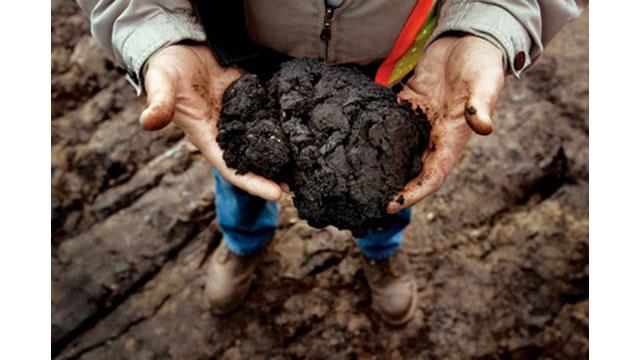
The development of Alberta’s oil sands has increased levels of cancer-causing compounds in surrounding lakes well beyond natural levels, Canadian researchers reported in a study released on Monday. And they said the contamination covered a wider area than had previously been believed.
For the study, financed by the Canadian government, the researchers set out to develop a historical record of the contamination, analyzing sediment dating back about 50 years from six small and shallow lakes north of Fort McMurray, Alberta, the center of the oil sands industry. Layers of the sediment were tested for deposits of polycyclic aromatic hydrocarbons, or PAHs, groups of chemicals associated with oil that in many cases have been found to cause cancer in humans after long-term exposure.
“One of the biggest challenges is that we lacked long-term data,” said John P. Smol, the paper’s lead author and a professor of biology at Queen’s University in Kingston, Ontario. “So some in industry have been saying that the pollution in the tar sands is natural, it’s always been there.”
The researchers found that to the contrary, the levels of those deposits have been steadily rising since large-scale oil sands production began in 1978.
Samples from one test site, the paper said, now show 2.5 to 23 times more PAHs in current sediment than in layers dating back to around 1960.
“We’re not saying these are poisonous ponds,” Professor Smol said. “But it’s going to get worse. It’s not too late but the trend is not looking good.” He said that the wilderness lakes studied by the group were now contaminated as much as lakes in urban centers.
The study is likely to provide further ammunition to critics of the industry, who already contend that oil extracted from Canada’s oil sands poses environmental hazards like toxic sludge ponds, greenhouse gas emissions and the destruction of boreal forests.
Battles are also under way over the proposed construction of the Keystone XL pipeline, which would move the oil down through the western United States and down to refineries along the Gulf Coast, or an alternative pipeline that would transport the oil from landlocked Alberta to British Columbia for export to Asia.
The researchers, who included scientists at Environment Canada’s aquatic contaminants research division, chose to test for PAHs because they had been the subject of earlier studies, including one published in 2009 that analyzed the distribution of the chemicals in snowfall north of Fort McMurray. That research drew criticism from the government of Alberta and others for failing to provide a historical baseline.
“Now we have the smoking gun,” Professor Smol said.
He said he was not surprised that the analysis found a rise in PAH deposits after the industrial development of the oil sands, “but we needed the data.” He said he had not entirely expected, however, to observe the effect at the most remote test site, a lake that is about 50 miles to the north.
Asked about the study, Adam Sweet, a spokesman for Peter Kent, Canada’s environment minister, emphasized in an e-mail that with the exception of one lake very close to the oil sands, the levels of contaminants measured by the researchers “did not exceed Canadian guidelines and were low compared to urban areas.”
He added that an environmental monitoring program for the region announced last February 2012 was put into effect “to address the very concerns raised by such studies” and to “provide an improved understanding of the long-term cumulative effects of oil sands development.”
Earlier research has suggested several different ways that the chemicals could spread. Most oil sand production involve large-scale open-pit mining. The chemicals may become wind-borne when giant excavators dig them up and then deposit them into 400-ton dump trucks.
Upgraders at some oil sands projects that separate the oil bitumen from its surrounding sand are believed to emit PAHs. And some scientists believe that vast ponds holding wastewater from that upgrading and from other oil sand processes may be leaking PAHs and other chemicals into downstream bodies of water.
3 WAYS TO SHOW YOUR SUPPORT
- Log in to post comments












